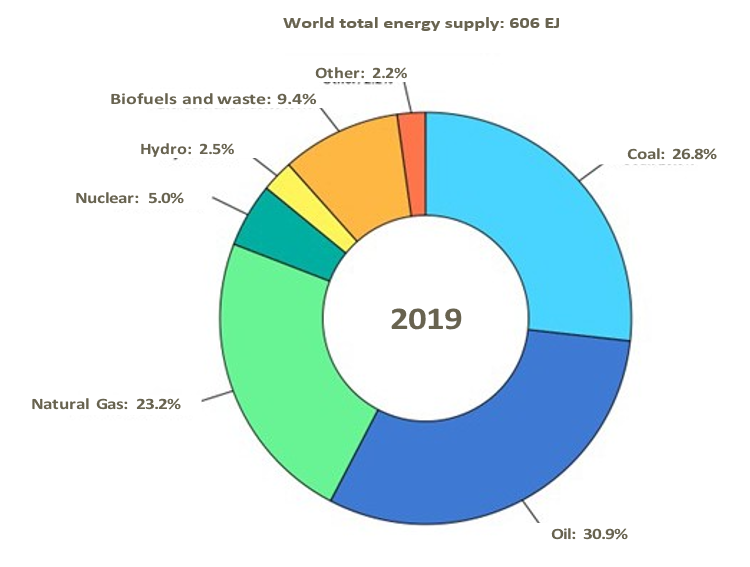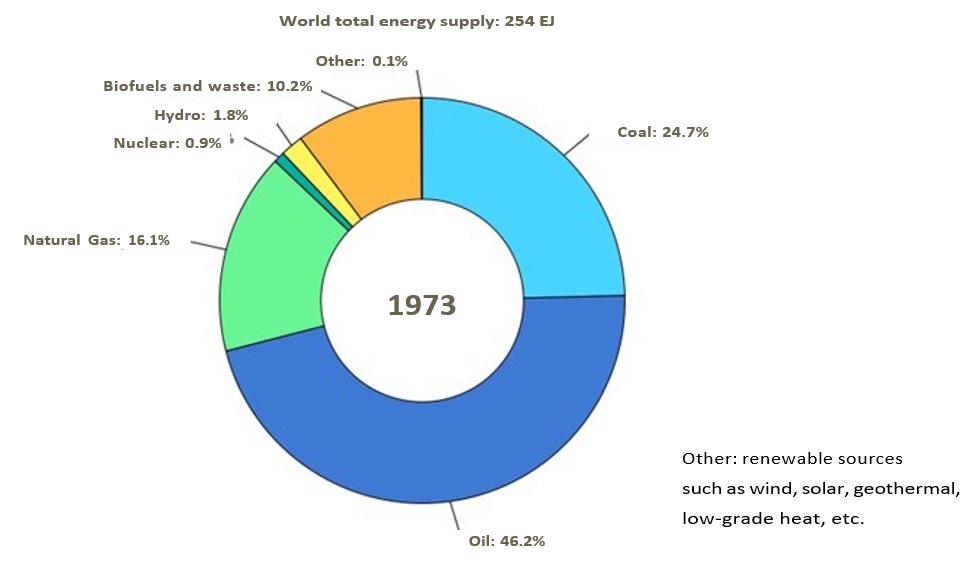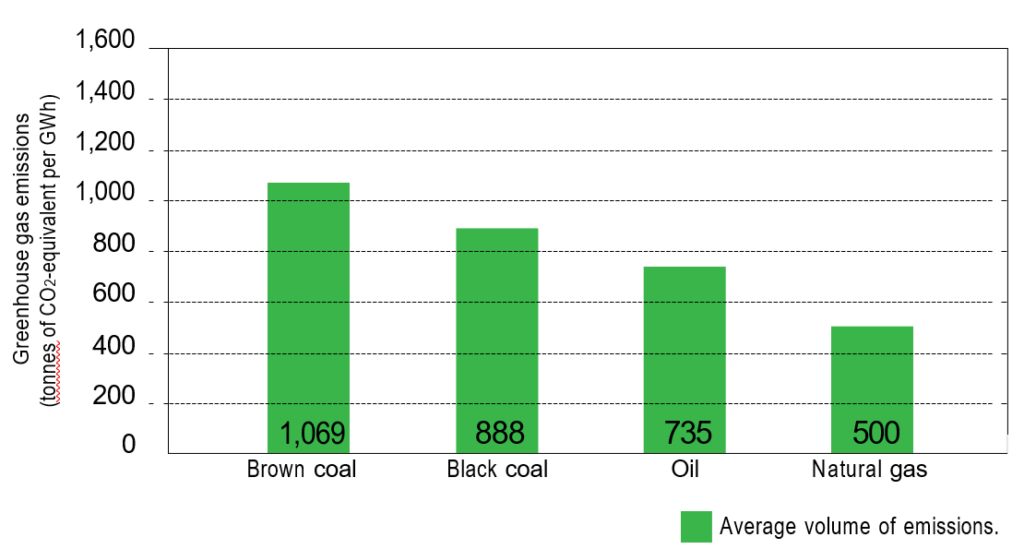The evolution of living organisms on our planet progresses from the simple to the complex. There was a time when Earth was inhabited by simple organisms and plants, which absorbed the sun’s energy and transformed it into live weight – into themselves. And the traces of their existence are still with us today: the energy gathered by these life forms, our predecessors, continues to live in what we call ‘fossil fuels’, substances formed from the remains of dead organisms. Crude oil, natural gas, coal, and peat are fossil fuels.
Fossils fuels are the legacy of living beings that came before us on Earth, and we should treat them sparingly and with gratitude. We must remember that no legacy is ever infinite. If we spend it unthinkingly, we will have nothing to leave to our children.
The combustion of fossil fuels, also known as hydrocarbons – coal, oil, or natural gas – can be used to produce electricity. This process occurs at thermal power plants. The engine room of a thermal power plant is fitted with a boiler and the combustion of fuel heats the water in this boiler, converting it into steam. The vapour pressure of the steam makes the blade of a turbine rotate and the turbine then drives a generator, which generates electric current. The electricity is carried to homes and other facilities by power lines (Fig. 3.1.4).
In 2013, the level of CO2 in the atmosphere exceeded 400 parts per million for the first time in at least 800,000 years. This concentration continues to grow rapidly, reaching levels of 421 parts per million in 2022. The reason is that globally, net greenhouse gas (GHG) emissions from human activity, defined as a difference between the gross emissions minus removals, for example by forests, have continued to grow. Between 2010 and 2022 the level of GHG emissions was higher than at any previous time in human history. Their concentration in the atmosphere will continue to grow until annual emissions are reduced sufficiently to be balanced by removals.


Figure 3.1.4 How a thermal power plant works

It was found that the production of electricity can be efficiently combined with heating of water, which is then channelled through pipes to the heating and hot-water systems of residential buildings, hospitals, schools and kindergartens, industrial plants, and other facilities. Such plants are called combined heat and power (CHP) plants. Usually, CHP plants are more efficient than plants that only produce electricity, which are called condensation power plants.
It is not always practical to channel hot water to apartment blocks from a CHP plant. In that case a boiler house is built, which uses fuel to heat water for the heating systems of local buildings.
The use of fossil fuels grew with the industrial revolution that began in the late 1700s in England. For many thousands of years earlier, wood, solar energy, wind, and water were the most common energy sources, although fossil fuels were already used in some places.
In 2019, fossil fuels dominated and accounted for 80.9% of all the primary energy supply of the world and their use was as follows: 30.9% for oil, 26.8% for coal and 23.2% for natural gas (Fig. 3.1.5).
Figure 3.1.5 World primary energy supply in 2019 and 1973


There are two major downsides to using fossil fuels. First, they are not inexhaustible, and the world’s reserves are being depleted, especially reserves of oil and gas. Second, the combustion of natural gas, oil, and especially of coal, emits large quantities of pollutants and greenhouse gases whose accumulation in the atmosphere increases the greenhouse effect. This leads to a rise in global temperature and other climate changes, and can be harmful to the climate, the environment and human health.
 When did people start using fossil fuels?
When did people start using fossil fuels?
The world’s oldest coal mine was opened in Holland in 1113. But there is evidence of people using coal, lignite, and peat as sources of fuel in the much more distant past.
In the Middle Ages, coal was already being mined in many places in Europe. It became cheaper than wood and was increasingly used in everyday life, even by poor families.
But, since houses at the time were not equipped with chimneys, rooms filled with acrid smoke, making it hard to breathe.
The consumption of coal increased dramatically with the start of the industrial revolution.
 By the 19th century, 700 million tonnes of coal were being mined each year. Then people turned their attention to oil.
By the 19th century, 700 million tonnes of coal were being mined each year. Then people turned their attention to oil.
Crude oil was known to mankind since ancient times. But it began to be used as fuel only in the middle of the 19th century, after the American chemist Benjamin Silliman found that kerosene could be obtained from crude oil. The oil boom that followed was also driven by a new way of extracting oil by means of boreholes instead of by simply digging wells. Natural gas came into widespread use as a fuel only in the 20th century.
Assessments by scientists have shown that the combustion of fossil fuels to produce energy substantially increases the greenhouse effect. For the sake of the climate, humanity must reduce its consumption of hydrocarbons and use more climate-friendly sources of energy.
Figure 3.1.6 Emission of greenhouse gases from the use of various hydrocarbon sources of energy

Table 3.1
Average pollutant emissions into the atmosphere from power plants using various fossil fuels in the European Union (grammes/gigajoule)
| Fossil fuel type | Dust | Carbon monoxide (CO) | Nitrous oxides (NOx) | Sulphur dioxide (SO2) |
| Brown coal | 3,254 | 89 | 183 | 1,361 |
| Black coal | 1,203 | 89 | 292 | 765 |
| Oil | 16 | 16 | 195 | 1,350 |
| Natural gas | 0.1 | 15 | 93 | 1 |


